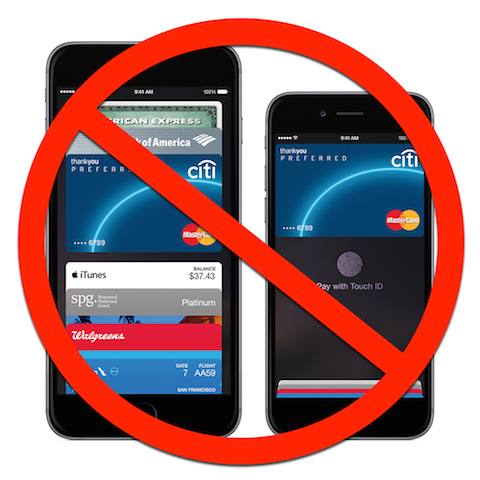Like many payments industry insiders, we have been following the recent impassioned industry dialog about the relative merits of Apple Pay and MCX’s CurrentC wallet with a combination of amusement and despair. The barbs and accusations being exchanged by the rival camps in this technological holy war between NFC and QR codes suddenly reminded me that many years ago I invested a big part of my academic career to the field in social psychology. I had a particular interest in the sub-discipline of Attribution Theory, which “deals with how the social perceiver uses information to arrive at causal explanations for events.”
In layman’s terms, attribution theory is concerned with how and why ordinary people explain events as they do. Two major areas of contention between Apple Pay and MCX reveal interesting lessons about the way information is released affects the perceptions of observers. Let me explain.
Case 1 – Watching the Clock. An initial coalition of merchants first announced the formation of MCX publicly just over two years ago, promising to bring to market a mobile payment and marketing system built directly by and for merchants. I think it’s fair to say that MCX has been the object of a good amount of scorn and skepticism over its “failure” to release a tangible product since that time (though we are assured that employee testing of the CurrentC wallet is now underway and that a full release is planned for the first half of next year). Changes in its management team and vendor set probably played a role here – and coalitions are never the fastest way to market – but the passage of time has led many observers to question the commitment and capability of MCX.
By contrast, Apple Pay sprang to life in September, seemingly without warning. The product arrived rather fully formed, with a nearly comprehensive roster of credit card issuers and networks on board, and with acceptance in place at a significant and growing list of merchants (thanks to its use of contactless/NFC technology). Only after questions were raised did we learn that Apple Pay had, in fact, endured a gestation period of about two years in stealth development, almost the same time period that MCX had been working on CurrentC. Perceptions were clearly shaped by this difference in announcement strategy – Apple appeared to be performing magic in real time, while MCX’s publicly ticking time clock seemed to cast doubt on the seriousness of its intentions. Yet both had been hard at work for about the same two years.
I believe MCX is playing a “long game” and there are likely good reasons for its deliberate pace, but the lesson here is that in the court of public perception, credibility is boosted by the timely fulfillment of one’s announced intentions (by the way, has anyone heard a firm release date for that new Apple Watch I’ve been craving?).
Case 2 – The Takeaway. Another public dust-up illustrates the importance of managing perceptions and the fact that “how you do something” can be more important than “what you do.” It came to light recently that MCX member merchants have agreed to focus on the CurrentC application and not engage with other digital wallet products (including Apple Pay) for a period of time. We had noted that in recent months (or even earlier) that MCX members like 7-Eleven and Best Buy had ceased their acceptance of contactless cards and tokens in their stores; it is that same contactless technology that allows the acceptance of NFC-based wallets like Apple Pay (and others including Google Wallet and SoftCard). Following Apple Pay’s launch, Walmart (another MCX member) confirmed that it would not be supporting Apple Pay in its stores.
However, MCX members CVS and Rite Aid, which had been accepting contactless card transactions for several years, continued to support contactless transactions and thus actually accepted Apple Pay transactions in the first few days after its launch (inadvertently, I suspect). Once aware of the situation, the two drug chains disabled their contactless functionality, eliciting ridicule from the Twitter-verse, and eventually the popular press, for what appeared to be a hostile action against customer choice and Apple’s noble crusade to address the electronic payments plight of mankind.
Striking to me is the intense focus of this criticism on CVS and Rite Aid, while little has been said about the merchants who previously disconnected (Best Buy, 7-Eleven) or even publicly voiced their opposition (Walmart). Likewise, dozens of others MCX merchants have largely escaped attention, although MCX’s exclusivity provisions have been widely discussed. What of the hundreds of merchants who support neither Apple Pay nor MCX? They are simply not in the discussion (gratefully so, I’m sure).
The lesson to be gleaned? I think the act of disconnection is being judged as far more aggressive, hostile and anti-consumer than the passive act of non-participation, even though the user impact is identical. In other words, “we haven’t put it in” is viewed in an entirely different way than “we pulled it out” even though the customer impact is the same (“Please just swipe your card”).
* * *
My instinct is that this discussion is mostly an inside debate among a group of obsessive payments professionals who have waited most of a decade for this moment of mobile payment epiphany (my kind of people, to be honest). While CVS and Rite Aid clearly endured one difficult 24-hour news cycle, payments really is a “long game” and the ultimate success of Apple Pay and CurrentC (and other digital wallets) will likely be determined by their ability to assemble a value proposition that offers a high quality shopping experience, delivers value for money, and provides noticeable convenience in the checkout process. Still, the events of the past couple of weeks represent a useful reminder that perceptions truly matter and are usually worth managing.
This post was written by Glenbrook’s Bryan Derman.


